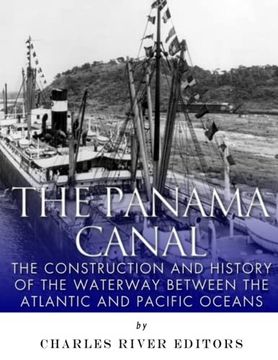The Panama Canal: The Construction and History of the Waterway Between the Atlantic and Pacific Oceans (en Inglés)
Reseña del libro "The Panama Canal: The Construction and History of the Waterway Between the Atlantic and Pacific Oceans (en Inglés)"
*Includes pictures *Includes accounts of the construction written by workers and their family members *Includes a bibliography for further reading *Includes a table of contents "It is not the critic who counts, not the man who points out how the strong man stumbled, or where the doer of deeds could have done them better. The credit belongs to the man who is actually in the arena; whose face is marred by dust and sweat and blood..." - Theodore Roosevelt Most people have heard of the Seven Wonders of the Ancient World, but while not as many have heard of the Seven Wonders of the Modern World, those who have are aware that the Panama Canal is considered one of them. In a world where few natural rivers carved out over eons of time have reached a length of more than 50 miles, the idea that a group of men could carve a canal of that length seemed impossible. In fact, many thought it could not be done. On the other hand, there was a tremendous motivation to try, because if a canal could be successfully cut across Central America to connect the Atlantic and Pacific Oceans, it would cut weeks off the time necessary to carry goods by sea from the well-established East Coast of the United States to the burgeoning West Coast. Moreover, traveling around the tip of South America was fraught with danger, and European explorers and settlers had proposed building a canal in Panama or Nicaragua several centuries before the Panama Canal was actually built. By the late 19th century, the French actually tried to build such a canal, only to fail after a great deal of resources were put into construction and after workers died of malaria and other illnesses. At the turn of the 20th century, not only was the need for a canal still there, but the right man was in the White House. Indeed, President Theodore Roosevelt, a celebrated outdoorsman, might have been the only president who could have foreseen and accomplished such an audacious feat, and even he considered it one of his crowning achievements. He wrote in his memoirs, "There are plenty of other things I started merely because the time had come that whoever was in power would have started them. But the Panama Canal would not have started if I had not taken hold of it, because if I had followed the traditional or conservative method I should have submitted an admirable state paper to Congress...the debate would be proceeding at this moment...and the beginning of work on the canal would be fifty years in the future. Fortunately [the opportunity] came at a period when I could act unhampered. Accordingly I took the Isthmus, started the canal and then left Congress not to debate the canal, but to debate me." Building the Panama Canal was a herculean task in every sense. Taking about 10 years to build, workers had to excavate millions of cubic yards of earth and fight off hordes of insects to make Roosevelt's vision a reality. Roosevelt also had to tie up the U.S. Navy in a revolt in Colombia to ensure Panama could become independent and thus ensure America had control of the canal. By 1914, ships were finally traversing through the Panama Canal, just as World War I was about to start, and a century later, the Panama Canal remains one of the world's most vital waterways. The Panama Canal looks at the origins and history of the important trade link between the Atlantic and Pacific. Along with pictures of important people, places, and events, you will learn about the Panama Canal like never before, in no time at all.

